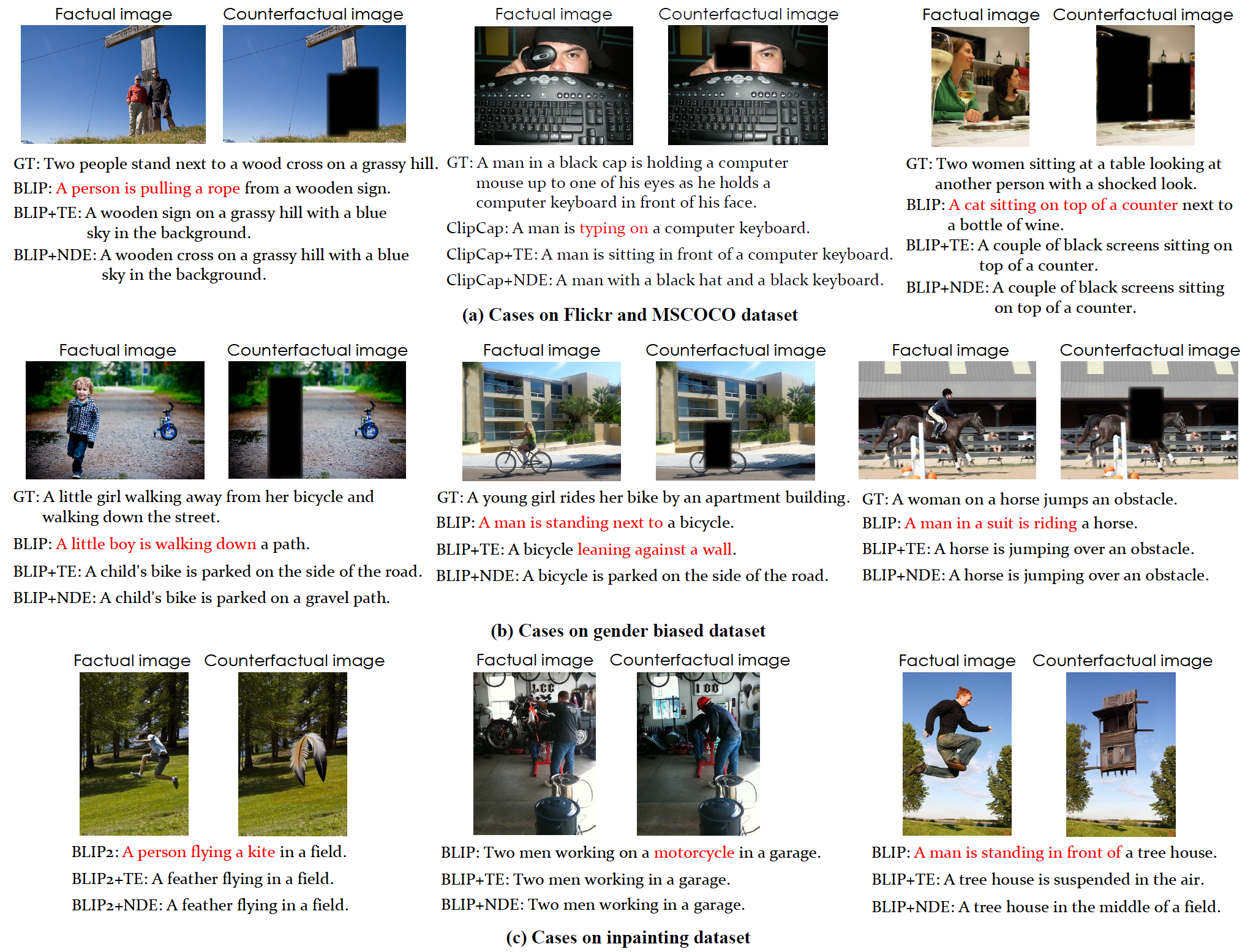This repository includes the original implementation of the paper See or Guess: Counterfactually Regularized Image Captioning (ACM MM 2024) by Qian Cao et al.
In this work, we present a generic image captioning framework that employs causal inference to make existing models more capable of interventional tasks, and counterfactually explainable.
More (Click me)
Our approach includes two variants leveraging either total effect or natural direct effect. Integrating them into the training process enables models to handle counterfactual scenarios, increasing their generalizability. Extensive experiments on various datasets show that our method effectively reduces hallucinations and improves the model's faithfulness to images, demonstrating high portability across both small-scale and large-scale image-to-text models.If you find our work useful, please cite the paper:
@inproceedings{cao2024see,
title={See or Guess: Counterfactually Regularized Image Captioning},
author={Cao, Qian and Chen, Xu and Song, Ruihua and Wang, Xiting and Huang, Xinting and Ren, Yuchen},
booktitle={ACM Multimedia 2024}
}
- Our method can be applied to many small- or large-scale image-to-text models. We provide an implementation of BLIP2 in this repo.
- The implementation of BLIP2 is based on the original one in LAVIS. You can find more details LAVIS/BLIP2.
Create a new virtual environment:
git clone https://github.com/Aman-4-Real/See-or-Guess
cd See-or-Guess/
conda create -n cfric python===3.9
conda activate cfric
- Please organize your data as the following format:
{
'img_path': 'val2014/COCO_val2014_000000522418.jpg', # relative image path in the dataset dir
'caption': 'A woman wearing a net on her head cutting a cake. ', # string
'phrases': [
{
'phrase': 'cake', # the noun phrase
'boxes': [[x1, y1, x2, y2], ...], # bounding boxes of the noun phrase
'first_word_index': 10 # the index of the first word of noun phrase appearing in the caption
},
...
],
'img_id': '522418' # unique image id
}
- Save the data into
.pklfile and put it in theYOUR_DATASET_DIR. - Change the
urlandstoragefields in the filesrc/lavis/configs/datasets/mscoco/defaults.yamltoYOUR_DATASET_DIR/{train,valid,test}.pkl, correspondingly.
For the key implementation, refer to cfr_caption_datasets.py, modeling_opt.py and CFRLoss.py.
Download pre-trained BLIP2 checkpoint (e.g., blip2-opt-2.7b) to the ckpt/ folder.
Generally speaking, our work is based on a trained image captioning model ("initial model" in the paper). You can follow the following steps:
- Prepare or train the initial model If you need to train the BLIP2 on your dataset, you can follow the instructions in the LAVIS repo, or you can run
cd src/run_scripts/
use the config src/lavis/run_cfgs/caption_coco_ft.yaml, run
bash train_caption.sh
- Use the trained initial model to generate counterfactual captions on the training set. Use the config
src/lavis/run_cfgs/caption_eval_gen_on_train.yamland run
bash eval_caption.sh
- Use the total effect loss (TE) or natural direct effect loss (NDE) to regularize the training. Run
bash train_caption.sh
Use the config src/lavis/run_cfgs/caption_coco_ft_te0999.yaml for TE and src/lavis/run_cfgs/caption_coco_ft_nde0999.yaml for NDE. Remember to set both do_NDE and do_TE to True while doing NDE training. Also adjust a proper value of hyperparameter α in the config.
For evaluation, use the config caption_coco_ft.yaml (for factual image captioning) and caption_coco_eval_mask_gen.yaml (for counterfactual image captioning) for src/run_scripts/eval_caption.sheval_caption.sh.
For any questions, please feel free to reach me at caoqian4real[at]ruc.edu.cn.





